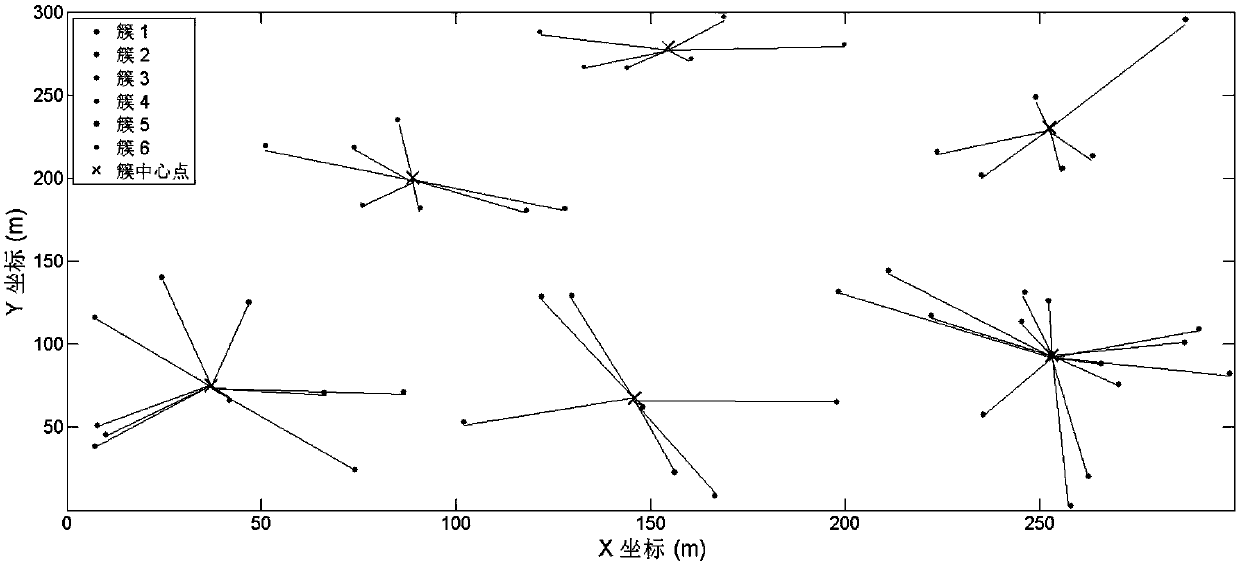Super dense network clustering method based on density improvement K-Means algorithm
A k-means algorithm and ultra-dense network technology, applied in electrical components, wireless communication, etc., can solve the problems that the final clustering result is easy to fall into a local optimal solution, and the number of clusters cannot be set, so as to improve the convergence speed Effect
- Summary
- Abstract
- Description
- Claims
- Application Information
AI Technical Summary
Problems solved by technology
Method used
Image
Examples
Embodiment Construction
[0029] The present invention will be described in further detail below in conjunction with the accompanying drawings and specific embodiments.
[0030] The present invention firstly simulates the distribution position of the base station of the micro cell in an area of 300m*300m, wherein the position of the base station satisfies the Poisson point distribution process, figure 1 What is shown is a simulated diagram of the distribution position of the base station number N=50. Then start the clustering process for base stations.
[0031] Such as figure 2 As shown, the general process of a kind of ultra-dense network clustering method based on the density-improved K-means algorithm of the present invention is:
[0032] Step 1. Record the geographic locations of N microcell base stations in the ultra-dense network, and calculate the Euclidean distance between every two microcell base stations.
[0033] Step 2. Calculating the distribution density and clustering density thres...
PUM
 Login to View More
Login to View More Abstract
Description
Claims
Application Information
 Login to View More
Login to View More - R&D
- Intellectual Property
- Life Sciences
- Materials
- Tech Scout
- Unparalleled Data Quality
- Higher Quality Content
- 60% Fewer Hallucinations
Browse by: Latest US Patents, China's latest patents, Technical Efficacy Thesaurus, Application Domain, Technology Topic, Popular Technical Reports.
© 2025 PatSnap. All rights reserved.Legal|Privacy policy|Modern Slavery Act Transparency Statement|Sitemap|About US| Contact US: help@patsnap.com



